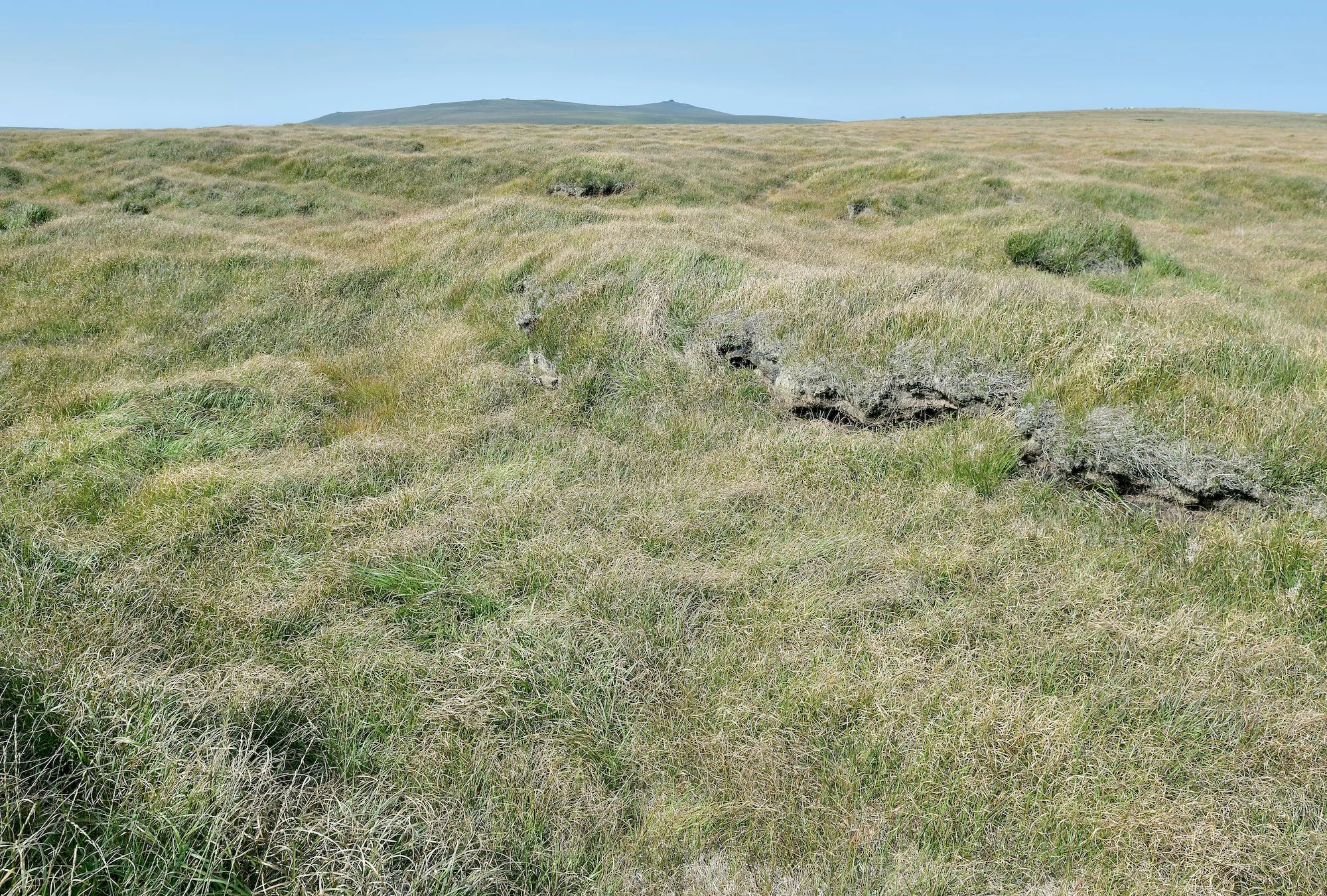Peatland restoration works at Cranmere Pool
A place of myth, legend, and history – Cranmere Pool is the birthplace of the Dartmoor letterboxing tradition and the location of many a tale about poor souls who haunt it still.
This winter season, an ambitious restoration schedule is set to begin, preventing further erosion of the peat, enhancing this important space for wildlife, archaeology and people, and to perhaps bring water back to the empty pool. Cranmere is at the heart of several Dartmoor legends, the most common of which involve the former mayor of Okehampton, Benjamin Gear, ordered to empty the pool with a sieve as punishment for stealing sheep.
Like most peatlands across the UK, Dartmoor's peatlands have been shaped by human activity over many hundreds of years. Mining, tin-streaming, draining, peat extraction, burning, military activity – they’ve all left their mark, with University of Exeter research estimating that less than 1% of Dartmoor’s blanket bogs are still functionally intact i.e. forming peat. The removal of water from the peatland landscape has left carbon being released into the atmosphere and waterways, loss of wildlife habitat, water running quickly off the land and the historic record within peat eroding away.
Dr Martin Gillard, Historic Environment Officer for the South West Peatland Partnership, sheds light on the significance of this project:
"Cranmere is an exceptionally exciting site for us. Not only is it shrouded in myth and legend, but it's also the very place where the Dartmoor letterboxing tradition began in the 1850s. When Benjamin Donn published the most detailed mapping of Devon at that time (1765) he included Cranmere Pool as the most noteworthy feature on the north of Dartmoor.
However, the pool itself now stands dry, as it has done for many years. Like much of Dartmoor’s peatlands, the peat in and around Cranmere Pool is in a really bad condition. The peat has become dried, eroded, and is washing away, threatening the future of features like the Cranmere Letterbox, the pool itself, and traces of past activities such as tin streaming. Without intervention, these historic elements, the peat, and this culturally significant landscape are at risk of further deterioration. "
Restoration works will aim to improve the hydrological functioning and health of the peat surrounding Cranmere Pool, as well as potentially restoring water to the pool. Works are focussed on raising the water table locally, re-wetting the peat and helping to reduce erosion. This involves putting in peat bunds and reprofiling erosion channels within the peat.
Part of Cranmere Pool c) Mike Rego
However, peatland restoration is not a simple, easy, quick-fix. Dartmoor’s peat has been degrading and drying out for hundreds of years, leaving the peat in poor condition, and it will take time to restore water to the area. Much of the peat is crumbling, and has peat pipes – channels below the ground caused by drying peat and water – within it that funnel a lot of water off site. Whilst restoration at Cranmere Pool will raise the water table, it might not be possible to create a pool that holds water above the surface all year round, particularly in summer. The peat around the pool is very badly degraded and water is travelling underground through the peat.
Eroding peatland near Cranmere Pool C) Mike Rego
The SWPP’s team of in-house archaeologists ensure that historical considerations remain central to all stages of the restoration process from start to finish. Dr Gillard shares how peatland restoration can actually help to expand our knowledge of historical land use:
"Peatland restoration across the South West couldn’t take place without our team of in-house archaeologists, ensuring that the historic environment is central to our planning, consultation, and practical efforts. This may involve excluding specific features from restoration areas, conducting vigilant site monitoring during machinery operations, adding findings to the historical record, or commissioning research into past uses of the peatland by generations before us. In the case of Cranmere Pool, we will be commissioning a study of historic documentary references to it and carrying out an archaeological watching brief on the works."
Like many sites across the South West, peatland restoration at Cranmere Pool is not just driven by our aim to benefit wildlife, water and the climate: it allows us to make a positive difference to the future of Dartmoor's rich history and culture too.
Stay tuned for updates on this ambitious restoration project.


